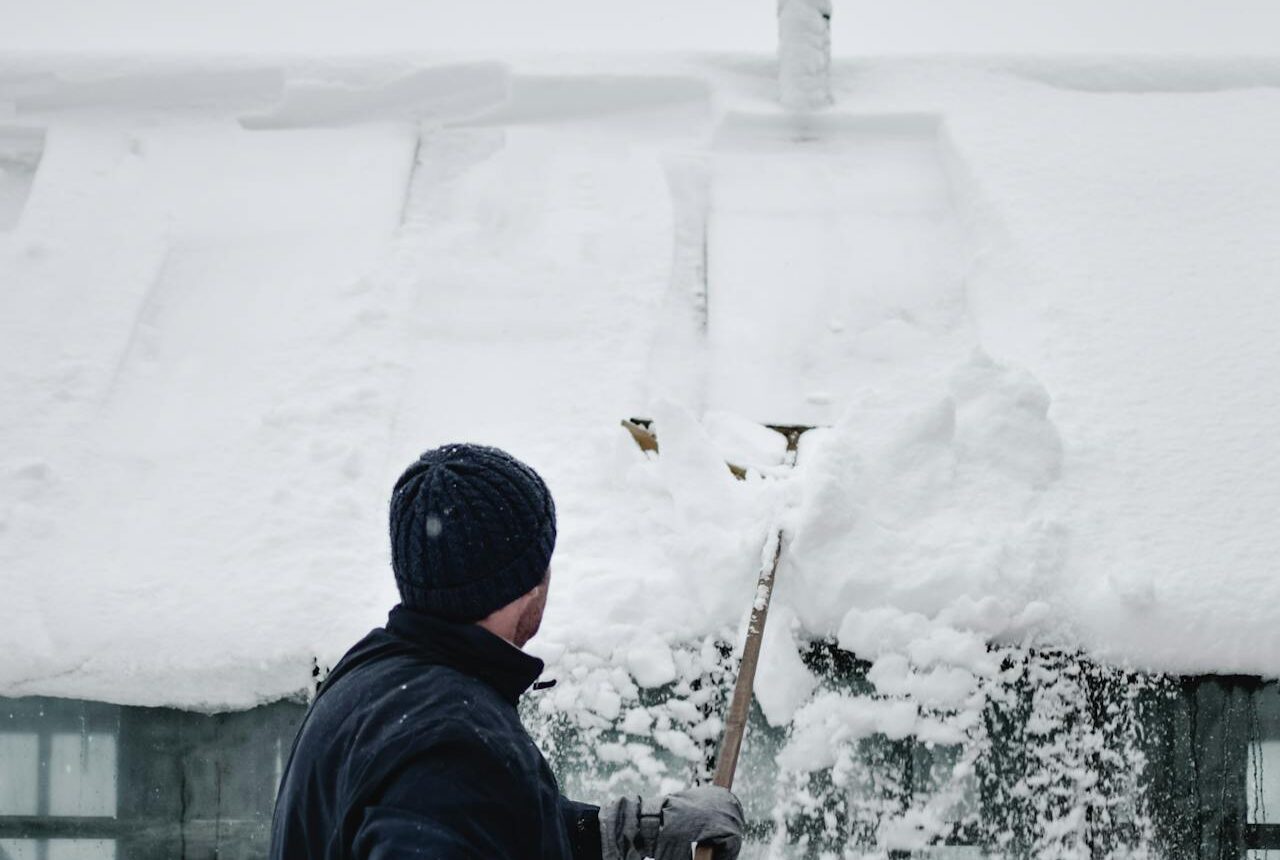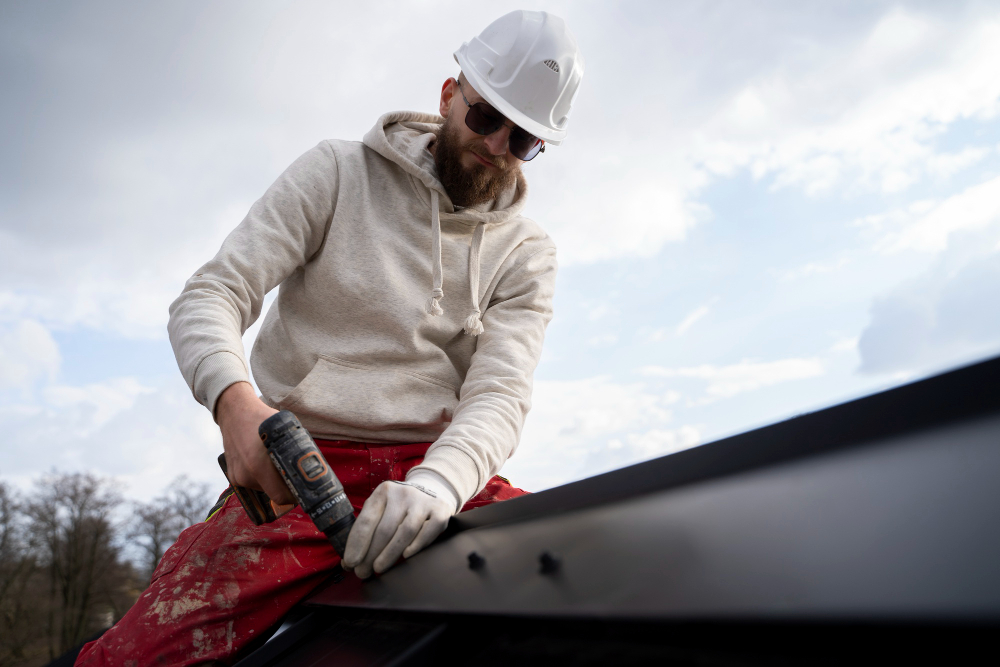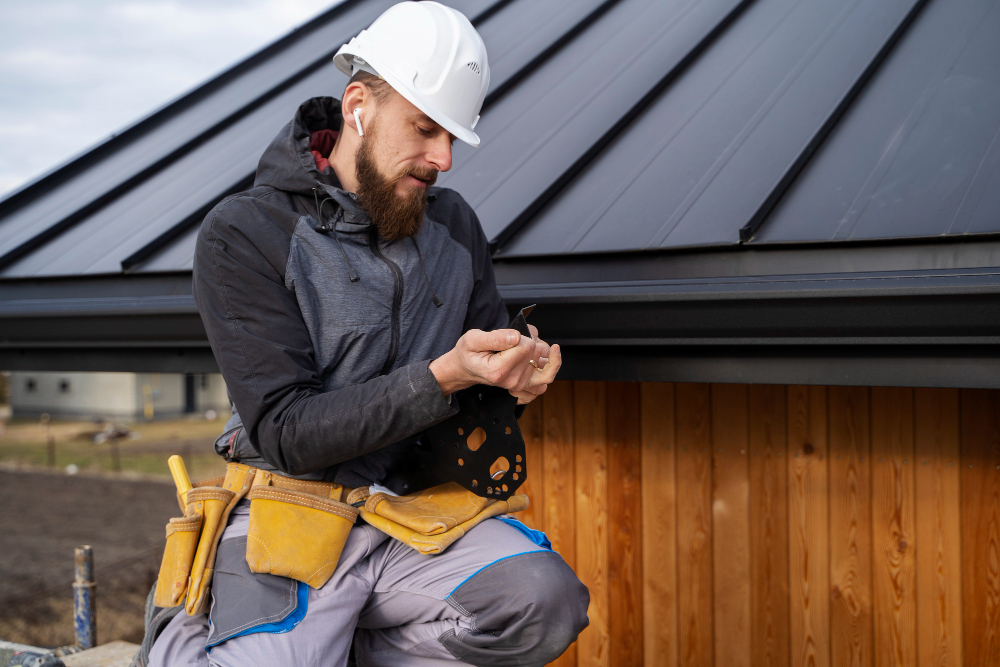
Table of Contents
Key Takeaways
✔ Roof replacement is possible in winter, but cold weather brings challenges like brittle materials, sealing issues, and safety risks that require expert handling.
✔ Roofing manufacturers recommend at least 40°F (4°C) for installation, since colder temperatures can prevent proper sealing and increase cracking risks.
✔ Preparing a roof for winter means inspecting for damage, cleaning gutters, and handling repairs before extreme cold sets in.
✔ A roof in good condition has intact shingles, no leaks or sagging, secure flashing, and is within its expected lifespan.
Yes, you can replace your roof in winter, but it’s generally not recommended due to cold temperatures hindering shingle sealant activation, potential material cracking, and increased safety risks from snow and ice. Key considerations include temperature, weather conditions, potential for cracks in shingles, the crucial need for sealant to activate for a waterproof seal, and the increased safety risks for installers.
While a winter replacement is possible, it requires expert contractors to handle the challenges, and a truly sealed roof may not be achievable until warmer temperatures.
Can I Replace My Roof in the Winter? 6 Key Considerations
1. Shingle Sealant Vulnerability
Asphalt shingles rely on heat to activate the sealing strip. This bond keeps shingles locked together and helps prevent leaks. Cold weather prevents proper bonding, which means the shingles may not seal right away. This can leave the roof exposed to wind and water damage. Manual sealing may be required, adding time and labor to the project. Roofers must apply adhesive by hand to make sure every shingle is secured.
2. Material Cracking and Brittleness
During very cold weather, shingles may become brittle and crack, break, or delaminate when bent. In some cases, they can become distorted or curl, preventing them from laying flat against the roof. These challenges mean that while roof replacement is possible in winter, it requires extra care and expertise from roofing professionals.
3. Safety Risks for Installers
Snow, ice, and frost increase the chance of falls. A winter roof is much more slippery than one in warm weather, and wind can make working at heights even more dangerous. Proper gear is essential. Fall protection systems, harnesses, and ropes must be used at all times. Winter-rated boots with good traction also help reduce the risk of slipping. Roofers must move more cautiously, which adds to the project timeline but helps ensure safety.
4. Ventilation and Insulation Challenges
Winter roof replacements can bring attention to problems with attic ventilation and insulation. When heat from inside the home leaks into the attic, it warms the underside of the roof and melts the snow above. As the water runs to the colder edges of the roof, it refreezes and forms ice dams that put stress on shingles and gutters. Tackling ventilation and insulation issues during a winter replacement helps prevent ice dams and improves the roof’s overall performance.
5. Longer Project Timeline
Manual sealing, brittle materials, and weather interruptions all combine to slow progress. Winter roof replacement often takes more time than in warmer months. A job that could take three days in summer may take a week or more in winter. For homeowners asking, Can I replace my roof in the winter? The answer is yes, but it will almost always take longer to complete.
6. Lower Cost and Contractor Availability
Winter is usually slower for roofers, since most homeowners wait until spring or summer for roofing projects. Because of this, homeowners may get better pricing and more flexible scheduling in the winter months. Contractors may be able to start sooner than during peak season. It is important, however, to choose a contractor skilled in winter roofing. Experience is essential to avoid problems with brittle shingles, weak seals, and safety risks.

At What Temperature Is It Too Cold to Install a Roof?
Shingle manufacturers usually recommend installing when temperatures are at least 40°F (4°C) or higher. Below this point, shingles lose flexibility and are more likely to crack, while adhesive strips may not activate the way they should.
If installation must take place in colder weather, roofers often rely on hand-sealing to ensure proper bonding. This technique is especially important on steep slopes greater than 12:12 (about 45 degrees) or anytime shingles are installed during very cold conditions. Extra care and precautions are necessary to protect the materials and guarantee a secure, long-lasting roof.
What Steps Should Homeowners Take to Prepare Their Roof for Winter?
There are several steps that can protect a roof during the cold months, even if a full replacement is not planned.
Inspect the Roof for Damage Before Cold Weather Sets In
Cracked, curled, or missing shingles can let water seep beneath the roof surface and cause leaks once snow and ice accumulate. Even small imperfections may worsen under the weight of winter storms. A detailed inspection ensures these weak spots are addressed before they create costly problems.
Ensure Gutters Are Clean and Drainage Is Working
Blocked gutters trap water that can freeze and form heavy ice dams along the roof edge. These dams force water back under shingles and into the attic or walls, creating leaks and interior damage. Regular cleaning and checking downspouts for proper flow are simple but vital steps.
Consider Scheduling Repairs or Replacements Before Extreme Cold Hits
If the roof already shows signs of wear, delaying work until after winter can lead to serious issues. Shingles that are failing will only deteriorate further under snow, ice, and freezing temperatures. Taking care of replacement or repairs early helps prevent emergencies when roofers are harder to schedule.
Check Attic Ventilation and Insulation
Proper ventilation allows warm, moist air to escape instead of heating the roof from below. Without this balance, melted snow can refreeze at the edges and form ice dams. Adding insulation also helps regulate temperature, reduces heating costs, and supports the roof’s durability.
Trim Overhanging Branches Near the Roofline
Snow and ice can weigh branches down until they snap, crashing into the roof and causing shingle or gutter damage. Even healthy branches can scrape and wear down shingles during strong winter winds. Clearing them away keeps the roof safe from unexpected impacts.
Review Roof Flashing Around Chimneys and Vents
Flashing is designed to seal the gaps where roofing meets vertical structures, but cold weather can loosen or crack it. Damaged flashing allows water to seep inside, often going unnoticed until major leaks appear. Inspecting and reinforcing flashing before winter helps keep the roof watertight.
Plan for Emergency Supplies
Winter storms can arrive suddenly, bringing heavy snow that piles onto roofs. Having tools such as roof rakes, safe de-icing products, and ice-melt systems allows homeowners to respond quickly before the weight or moisture causes damage. Preparation ensures the roof stays manageable even in harsh conditions.
How Can I Tell If My Roof Is in Good Condition?
Your roof is one of the most important components of your home, protecting it from weather, pests, and water damage. Knowing how to determine if your roof is in good condition helps you avoid costly repairs and ensures your home remains safe and secure.
Visible Shingle Wear and Damage
Shingles are the first line of defense against rain, snow, and wind. If you notice missing, cracked, or curling shingles, your roof is likely in need of attention. Another sign of wear is finding excess shingle granules in your gutters, which means the protective layer is breaking down.
Signs of Leaks and Water Damage
A roof in poor condition often shows signs inside the home. Look for water stains on ceilings, peeling paint, or damp spots in the attic. Even a small leak can lead to mold growth and structural issues if left unchecked, so prompt attention is critical.
Flashing and Seal Integrity
The flashing around chimneys, skylights, and vents is designed to keep water out. If the flashing is rusted, cracked, or pulling away, it compromises the roof’s waterproofing. Seals should always be tight and properly maintained to prevent leaks.
Age of the Roof
Roof materials have different lifespans, with asphalt shingles lasting around 20–25 years and metal or tile roofs lasting much longer. If your roof is nearing the end of its expected lifespan, it’s wise to schedule a professional inspection even if there are no visible issues.
Structural Shape and Sagging
A strong roof should look even and solid. If you notice sagging areas or dips in the roofline, this can indicate a problem with the roof decking or structural supports. These issues are serious and should be addressed immediately by a roofing expert.
Professional Roof Inspections
While you can catch obvious problems on your own, hiring a roofing professional for routine inspections ensures nothing is overlooked. Contractors use specialized tools and experience to spot hidden damage and provide recommendations for repairs or replacement.

Frequently Asked Questions
How long does a typical roof replacement take?
A standard roof replacement usually takes a few days in good weather conditions. However, the timeline can stretch longer in winter due to manual sealing, fragile shingles, or weather delays. The exact duration depends on roof size, slope, and contractor availability.
What signs show that shingles are nearing the end of their life?
Shingles that are curling, cracking, missing granules, or starting to lift are all signs they are wearing out. These conditions reduce the roof’s ability to protect against water and wind. If many shingles show these issues, it’s time to plan for replacement.
Can ice dams damage a roof?
Yes, ice dams form when melting snow refreezes at the roof’s edge, blocking water from draining properly. This trapped water can seep under shingles and cause leaks inside the home. Preventing ice dams requires good attic insulation, ventilation, and clear gutters.
Can I walk on my roof to check its condition?
It is not recommended for homeowners to walk on their roof. Roof surfaces can be slippery, especially in winter, and walking on shingles may cause damage. Using binoculars from the ground or hiring a professional inspection is a safer choice.
Should a roof be replaced if only a few shingles are damaged?
If only a small area is affected, repairs may be enough. However, if the roof is old or showing widespread wear, replacement may be more cost-effective in the long run. A professional inspection helps determine the best option.
Get Expert Roofing Help in Poughkeepsie, NY!
Professional roofing solutions in Poughkeepsie, NY are best handled by trusted experts who understand the challenges of local weather. Lyndsey Roofing, LLC provides skilled installation, repairs, and replacements designed to keep homes safe year-round. With a strong reputation across Poughkeepsie, NY, every project is completed with attention to detail and long-lasting results.
Call Lyndsey Roofing, LLC today to schedule a consultation and protect your home in Poughkeepsie, NY.







